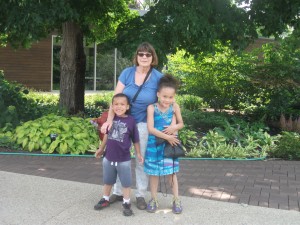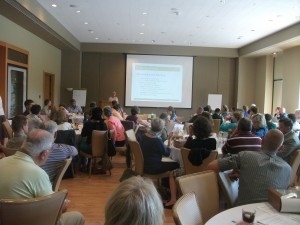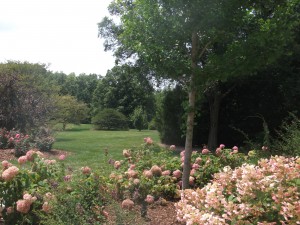Would you imagine that the trees in the metropolitan Chicago region provide compensatory value of $51.2 billion? This is the calculation produced through i-Tree, a free software program provided by the U.S. Forest Service to estimate tree canopy and the ecological services it produces for our communities. This is not a seat-of-the-pants calculation. There is a great deal of science behind it, as I have learned over the last two decades in interactions with the Forest Service and the larger professional community devoted to advancing the subject of urban forestry. There is a substantial technical literature these days about the benefits of the urban forest in terms of air pollution filtration, reduction of stormwater runoff, reducing soil erosion, reducing urban violence by providing a calmer, more pleasant environment, and enhancing real estate values. In short, trees have serious economic value. At the American Planning Association, we cited much of this research five years ago when we released Planning the Urban Forest: Ecology, Economy, and Community Development, a Planning Advisory Service Report we produced using a matching grant from the Forest Service.
The value of that document for urban planners has made it popular, and we have participated for several years at a national level in the Sustainable Urban Forests Coalition. But the important work on the urban forest occurs at the local and regional level. Think globally, but plant your trees locally.
It was a great honor, therefore, to be invited as one of about 100 participants to the kickoff meeting July 30 of the Chicago Regional Trees Initiative at the Morton Arboretum in Lisle, Illinois. The arboretum itself is the result of an environmental vision long ago by Joy Morton, the founder of the Morton Salt Company, who had a love affair with conservation—and put out serious money to launch the arboretum to prove it almost a century ago. I learned a good deal about this interesting man when reading a biography of him, A Man of Salt and Trees: The Life of Joy Morton, as a biography judge for the Society of Midland Authors’ annual book awards. The book was one of our 2010 finalists in that category.
Morton Arboretum is now leading this initiative with the help of numerous organizational partners and donors, nearly all of whom were present for the meeting, which lasted from 9 a.m. until 1 p.m., including a working lunch.
I will not go into the Regional Trees Initiative in great depth right now, but I intend to follow it more deeply in the future on this blog. Not everything is ready yet; an intended website is not yet up, the logo is still in development, and working groups are being formed. Lydia Scott, the director of the Regional Trees Initiative, appears to have a hard-working staff behind her along with solid institutional support. One of our group activities that morning was to sit at our respective tables and hatch ideas about what was most needed to make the initiative a success. Those ideas were added to a folding wall image of trees as branches, and then leaves were added with individuals’ names after we were asked what we and our organizations were willing to do to help. The people attending represented a variety of local governments in the area, regional organizations like the Chicago Metropolitan Agency for Planning and the Metropolitan Mayors Caucus, and educational and civic organizations.
What we learned over the course of the morning was the quality and distribution of information concerning the regional urban forest, which is decidedly uneven, leaving room for improvement through such an initiative. The city of Chicago, it turned out, had by far the best information concerning its urban forest, whereas in many other communities a more thorough tree census is still needed. But there are substantial resources to draw upon, such as “Urban Trees and Forests of the Chicago Region,” a Forest Service research report freely available online. The larger issues often relate to the uneven commitments, and distribution of resources, among the 248 municipalities in the region. A few have excellent plans for local forestry management, but many have none. There is room for both the U.S. Forest Service and the Illinois Department of Natural Resources to improve outreach with technical assistance, but there is also a burning need for an effective outreach campaign to educate both public officials and citizens on both the importance of the issue and the best means of moving forward. For purposes like that, the Communication Work Group is one of several the initiative has established to mobilize the resources of its many partners in the effort. That is why we were all there.

While I was busy in the meeting, my wife and two grandchildren were busy enjoying the arboretum. which includes some nice children’s facilities and a cafeteria.
I plan to return to this subject in the future as the initiative progresses, particularly as RTI rolls out its website and other communication tools. Regular followers of this blog know that I attach considerable importance to this subject as a key element in the quality of urban life. If you live in another metropolitan area, what’s underway there to pursue similar goals?
Jim Schwab


Trackbacks/Pingbacks